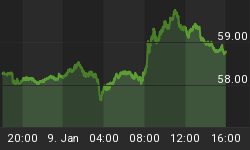The bluntest difference between gold and silver? Warren Buffett...
We've been inundated here at BullionVault with comments and queries in response to Gold Value $3844, Paul Tustain's new video presentation.
Apologies if we've not got round to answering your email yet. Chief amongst the queries? "What's your view of silver?" Which on a risk-adjusted, 'fair value' basis, is tougher still to answer.
Just as you can with gold, you could plug your own forecast for changes to the silver price - under different levels of consumer-price inflation - into Paul's gold value calculator (see column E. You'd also need to reset the "Current price" to $40 of course in cell E3). Simply running this exercise for silver but using Paul's view of the various gold price outcomes, the current "fair value" would come out nearer $109 per ounce - again, like gold, significantly higher than today's market price.
But silver is a very different market to gold. Most crucially, there's no commonly accepted benchmark value - such as a suit of men's clothes for an ounce of gold - against which to measure silver across time.
See Forbes magazine, for instance, on long-term valuations. All gold, no silver. Looking back 2,500 years, ![]() Stephen Harmston - writing for the World Gold Council in 1998 - found the same long-term value reversion in gold prices vs. the cost of bread. Again, no silver. Not having a base value for silver doesn't interfere with Paul Tustain's mathematics on his calculator. But it does mess with the methodology, denying the vital importance - in the absence of cashflow - of "over-" or "under-valuation".
Stephen Harmston - writing for the World Gold Council in 1998 - found the same long-term value reversion in gold prices vs. the cost of bread. Again, no silver. Not having a base value for silver doesn't interfere with Paul Tustain's mathematics on his calculator. But it does mess with the methodology, denying the vital importance - in the absence of cashflow - of "over-" or "under-valuation".
Sure, you could plug in a base value for silver, figured off that suit of men's clothes, using the gold/silver ratio. But that would:
a) rely on agreeing a long-term ratio (open to fierce debate);
b) ignore silver's changing industrial use (and thus its changing economic value);
c) relegate silver's value to merely a function of gold.
Another route might be to track mining-output costs per ounce. Because, other things being equal, the price of a commodity should - in a free market -- revert long-term towards its cost of production. Interestingly, the GFMS consultancy now puts total costs per ounce of gold, including infrastructure spend, above $800 per ounce...not too far from Paul's current "suit of men's clothes". (Using Google to average the top 20 prices for a good men's suit in the US, Tom Anderson at PassantGardant finds a base value of gold at $800-$850 per ounce today.) But silver is typically a by-product of other mineral extraction, rather than the primary target. So it's impossible to judge today's global "average", let alone calculate historical mining costs for the kind of back-check which Paul runs for 1980 gold.
Yes, both gold and silver have been used as money throughout history. But while gold has tended to adopt the "store of value" function of money, silver has been used more as a "means of exchange". India continued to mint silver rupees until 1947, for example, long after the Great Britain quit the gold standard. US silver certificates could be redeemed for Silver Dollar coins until 1968, almost 35 years after private gold-ownership had been banned.
Longer-lived than gold money, the purchasing power of silver coins was much more variable over time, thanks to regular debasement by greedy governments. The English Pound, for instance, contained barely one-third as much silver in 1600 as it did 300 years earlier, while the Genoese Lira in Italy shrank by nearer 90%. Gold coins was remarkably stable in comparison.
Silver's other big difference from gold has been its changing industrial use. Some 60% of annual demand now comes from industry, rather than those store-of-wealth uses (coin, bar, jewellery and ornament) accounting for more than 89% of gold demand. The composition of silver's industrial demand has also changed dramatically over time. In only the last 10 years, for instance, photographic demand has collapsed, while other existing uses (such as in solar panels) have surged and many new uses have been developed (in hospital linen, deoderants, wood preservatives).
The bluntest difference? Perhaps it's Warren Buffett. The famous "value investor" has said he doesn't understand gold, because it has "no utility". Never mind its 5,000-year history o storing wealth. Anyone watching the gold market from Mars "would be scratching their head" to see it "dug up in Africa" only to be buried again in a vault underground, says Buffett.
Yet his Berkshire Hathaway fund tried to corner the silver market in the late 1990s, selling its massive position in 2006 for a fair profit. So while Buffett doesn't "get" gold, his Graham-and-Dodd value investing made silver a valid play. Because he thought it was undervalued against the outlook for industrial demand.
Gold analysts are spared having to guess how technology might affect prices. Whereas the bigger prize - for you, Warren Buffett and for the Hunt brothers, who famously attempted a silver corner in the late 1970s - may look to be in judging silver's future mix of monetary, investment and industrial use.















